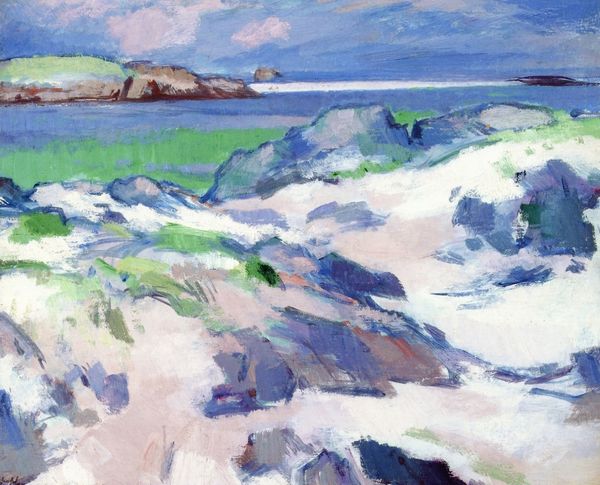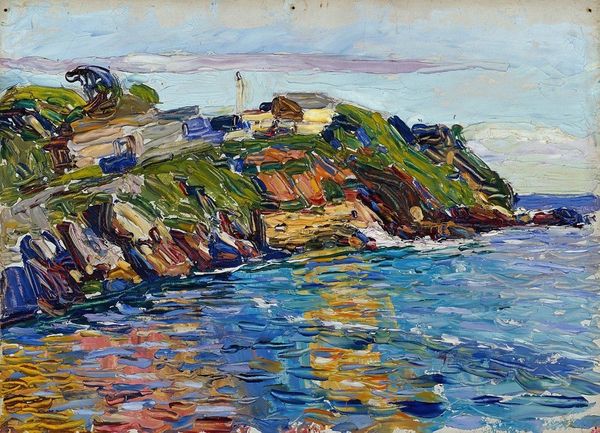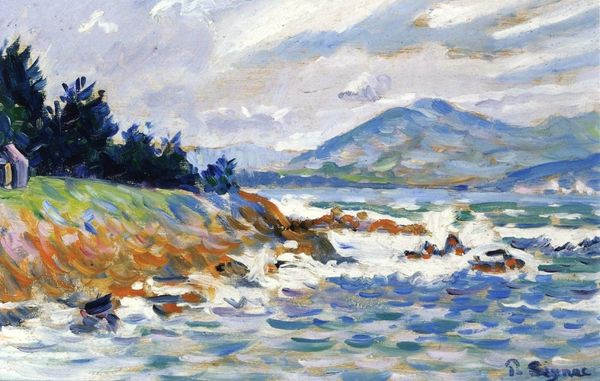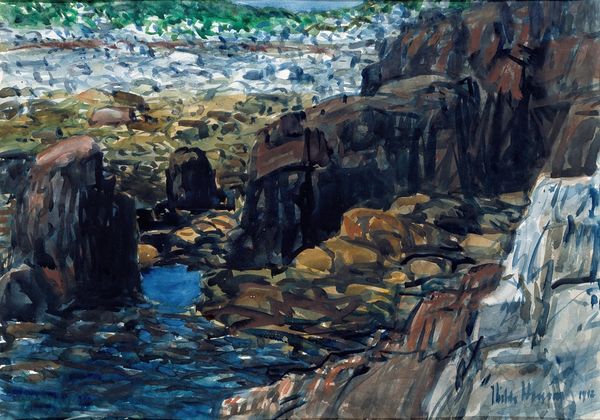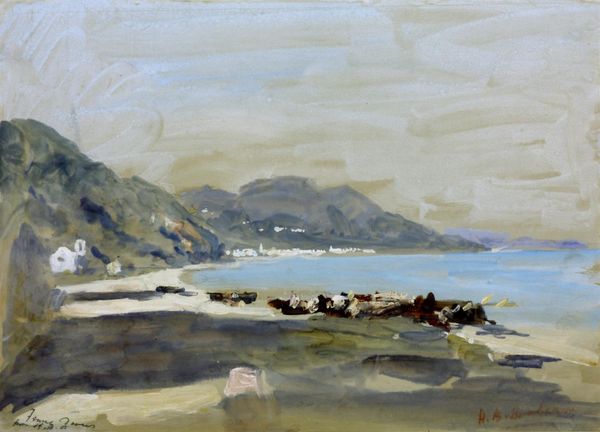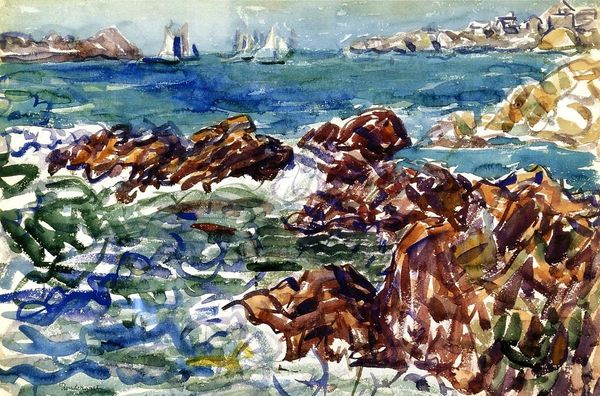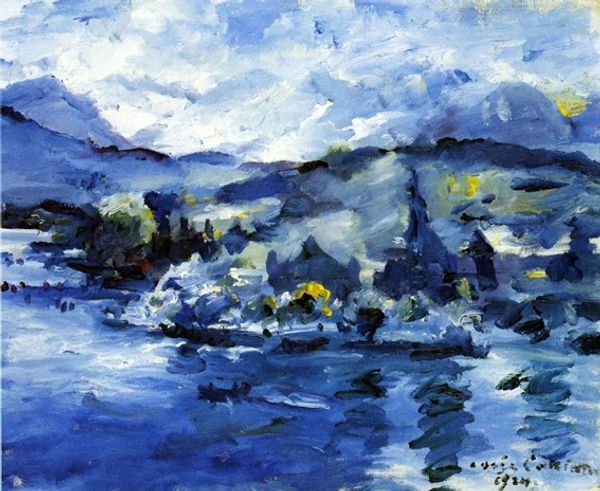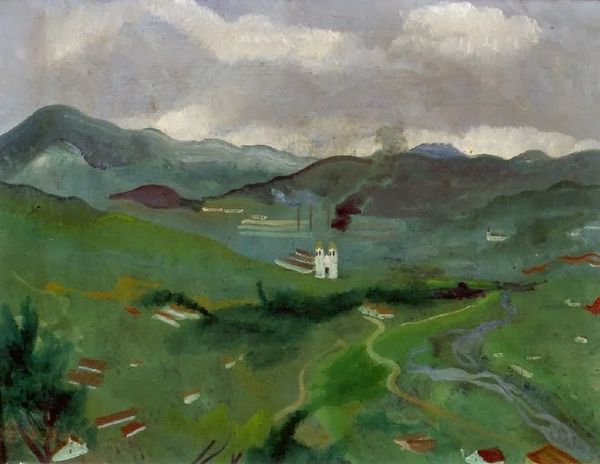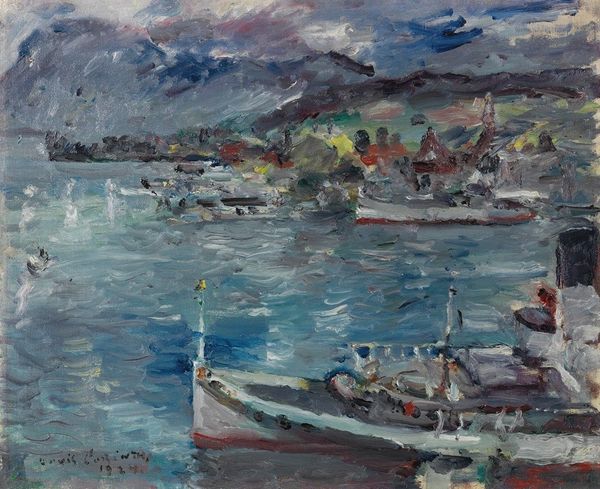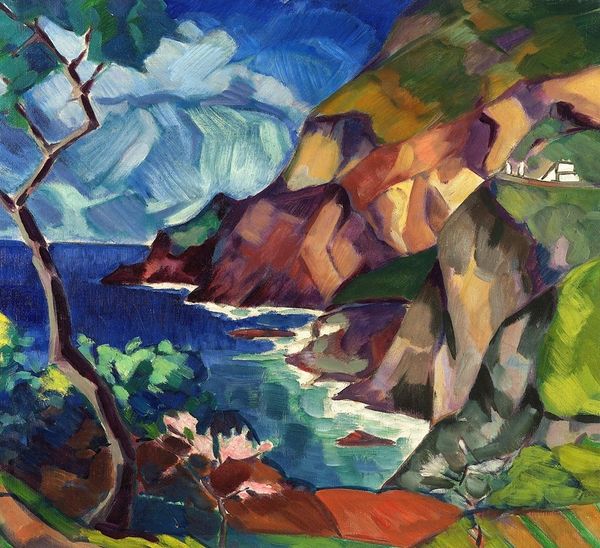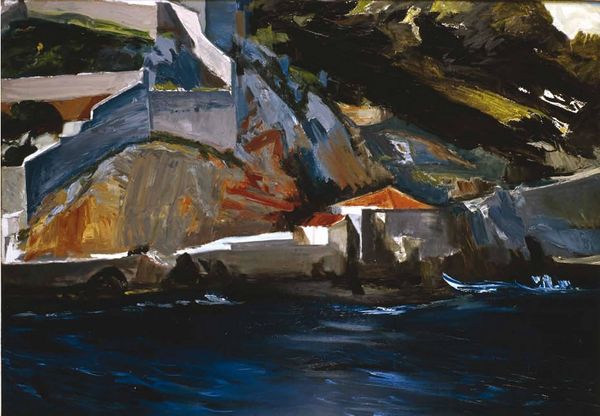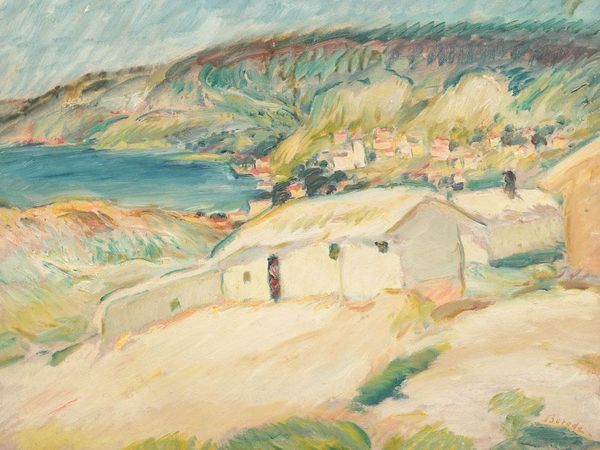
painting, oil-paint, impasto
#
painting
#
impressionist painting style
#
oil-paint
#
landscape
#
impressionist landscape
#
oil painting
#
impasto
#
expressionism
#
post-impressionism
#
expressionist
Copyright: Public domain
Editor: Here we have Samuel Peploe's "A Windy Day at Barra," an oil painting. The brushstrokes are so thick and expressive! It feels like you can practically feel the wind whipping around you. What jumps out at you when you look at this painting? Curator: I'm immediately struck by how Peploe engages with the legacy of Impressionism, but pushes it towards a more personal expression. Think about the context: early 20th century, artists are grappling with industrialization and rapid social change. How do you think Peploe's choice of Barra, a remote Scottish island, plays into this? Editor: I guess it's a retreat from all that. A place to find a more authentic connection to nature, away from the modern world? Curator: Precisely! And consider the art market itself. Landscapes were popular, easily marketable. But Peploe isn't simply painting pretty pictures. The choppy brushstrokes, the simplified forms, suggest a raw, almost turbulent energy. It's nature, but not necessarily tamed or picturesque nature. How does that contrast with, say, earlier landscape traditions? Editor: Earlier landscapes often seem to romanticized, idealized. This feels much more immediate, visceral. It's less about showing a perfect view, and more about conveying an experience. Curator: Exactly! And consider how the painting might have been displayed, perhaps in a salon alongside more traditional landscapes. Peploe's piece would have been making a statement, not just about the landscape itself, but about the evolving role of art and the artist within society. Does thinking about that context shift your initial impression at all? Editor: Absolutely. Seeing it as part of a broader artistic conversation makes it even more powerful. I see how he's not just painting a scene, but also engaging in a dialogue about art itself. Curator: Indeed! And hopefully this reveals a sliver of how historical and societal context can shape not only the art we see, but the questions we ask of it. Editor: Definitely something to think about! I’ll definitely view paintings differently from now on.
Comments
No comments
Be the first to comment and join the conversation on the ultimate creative platform.
